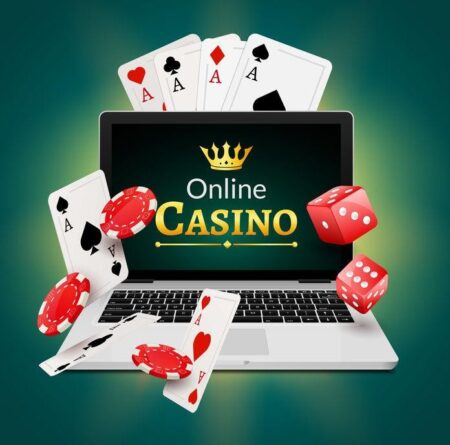Most of what I learned about odds and probability is what I picked up through independent study. Did you know that odds and probability affect gambling more than most? And there’s a bit of luck involved, of course.
Today, I’ll be going over some little-known facts that might just give you a better understanding of odds. Here are seven things I know about odds and probability that you probably don’t.
1 – Probability Deals With Random Chance
Math is a broad subject, and like most broad subjects, it’s subdivided into smaller subjects. “Geometry,” for example, is the branch of math that deals with distances, sizes, and shapes. “Trigonometry” is even more specific. It’s the branch of math that deals with angles and triangles.
Note:
Probability, along with statistics, is the branch of mathematics that deals with random events and measuring how likely they are to occur.
Understanding probability is especially important in gambling and investing, but it can change your life in all kinds of ways. To get a better idea of how you can apply probability-based thinking to your life, check out a book by David Sklansky called DUCY? Exploits, Advice, and Ideas of the Renowned Strategist.
2 – Probability Measures How Likely Something Is to Happen
If you want to know how far one point is from another, you use “distance” to measure that. In the United States, distances can be measured in inches, feet, yards, and miles.
Another example of a word used to describe a measurement is “volume.” You can buy milk by the quart or by the gallon, for example.
“Probability” isn’t just the mathematical study of likelihoods. It’s also the word we use to describe and measure how likely something is to happen.
Probability, by its nature, is measured differently from other kinds of measurements.
3 – It’s Always a Number Between 0 and 1
Most things we measure using arbitrary units. In the previous example, we use inches to measure distance and ounces to measure volume.
But in probability, we use a measurement that’s based on fractions. And the probability of an event happening is always just a fraction that’s less than or equal to 1.
If something has a probability of 1, it’s a sure thing. It will happen every time.
Here’s an example: If you have a jar with 20 marbles in it, and all those marbles are white, and you pick a marble from the jar without looking, the probability of picking a white marble is 1.
The probability of picking a black marble is 0. There aren’t any black marbles in the jar.
It gets more interesting when you put different colored marbles in the jar. If you put 10 white marbles and 10 blackjack marbles, you have a probability of 1/2 for getting a white marble at random. You also have a 1/2 probability of getting a black marble at random.
The formula for probability is simple, too. The probability of an event is the number of ways that event can happen compared to the total number of possible events.
In the marble example, you have 20 possible events (20 possible marbles you could pick at random). 10 of those are white. The probability of getting a white marble at random, then, is 10/20, which reduces to 1/2.
You can express that probability in multiple ways, too, not just as fractions.
Here are some examples:
- You can express that probability as a decimal, 0.5.
- You can express that probability as a percentage, 50%.
- Or you can express that probability as odds, 1 to 1 or “even odds.”
That last way of expressing a probability, as odds, is especially useful in gambling.
4 – Odds Are A Way of Describing Probability That Are Especially Useful
The odds of something happening are just a comparison of the number of ways it can happen versus the number of ways it can’t happen. In the marble example, you have 10 white marbles versus 10 black marbles, so the odds are 10 to 10 of getting a white marble.
You can reduce that just like you would a fraction to get even odds – 1 to 1.
Let’s change the example, though. Now, let’s suppose you have a jar with 5 white marbles and 15 black marbles in it. Your odds of drawing a white marble are 15 to 5, which reduces to 3 to 1.
For every possible white result, you have three possible black results. Obviously, you’re likelier to get a black marble in this situation than you are to get a white marble.
One of the reasons that this is so useful is because odds are also used to describe how much a bet pays off. A lot of bets are even money bets. You bet $100, and if you win, you get $100. If you lose, you’re out $100.
But in some bets, you might win more money than you’re risking. For example, you might place a bet where you could win $200 and only risk $100.
This is what makes it possible for poker players to play professionally and win in the long run. They put their money in the pot when they have better payout odds than odds of winning. This is also what makes casinos profitable. They pay out bets at odds less than your odds of winning.
5 – The Casino Has a Mathematical Advantage for Every Game
When you play casino games, the casino always has a mathematical advantage. It’s easier or harder to measure depending on the game you’re playing and the rules.
The easiest example might be roulette. The math behind the house edge is relatively easy to calculate.
Let’s look at an even money bet, a bet that the ball will land on a red number.
You have 18 red numbers on a roulette wheel, 18 black numbers, and 2 green numbers. You have a total of 20 ways to lose and 18 ways to win.
The odds, therefore, of winning are 10 to 9. But the payout is 1 to 1.
Let’s say you place this bet 19 times in a row. You’ll win 9 times, and you’ll lose once on average, in the long run.
If you bet $100 every time, after completing those 19 bets, you’ll have won $900 and lost $1000. This results in a net loss of $100 over 19 bets. Your average loss per bet is $100/19, or $5.26.
Since $5.26 is 5.26% of $100, we say that the house edge for that roulette bet is 5.26%.
Important:
The calculations for the house on other bets in other games might be different and even more complicated, but you can count on this – the casino always has the mathematical edge over the player.
6 – The House Edge for Each Casino Game Is a Known Quantity
For every casino game, the house knows what its mathematical edge is. The player can do a little research and find the house edge for every table game, too. You can use this information to inform your gambling decisions.
An easy way to do this would be to only play the games with the lowest house edge.
A simple comparison of the house edge in blackjack, 0.5% in some games, with the house edge in roulette—5.26%—tells you that blackjack is the better game.
But for the gambler, one game in the casino has an unknown house edge. That’s the slot machine.
To calculate the house’s advantage, you must know the probability of each event as well as the payouts for those events.
Modern slot machines use a random number generator (RNG) to determine outcomes. Not every symbol has the same probability of showing up. Some symbols might show up two or three times more often than some other symbols, for example.
The casino, though, has the details for the slot machine games’ probabilities. They know which slots have a house edge of 5% and which slots have a house edge of 15%.
You can’t know, though, unless you clock a large number of spins and extrapolate the data. Even then, you could be way off.
7 – The Theory Behind Probability Has Real-World Implications
You can use the ideas behind probability to inform your decisions in life. Using probability, you can measure the expected value of the various decisions in your life. You just compare the potential loss with the potential win and make your decisions accordingly.
Here’s a silly example: You’re at a bar with a friend, and he decides he’s going to make a pass at every woman in the bar.
What does he risk? He risks potential rejection, but his self-esteem is strong, and rejection is meaningless to him. He’s basically placing a free bet because if he loses, he isn’t out anything.
If your friend is reasonably charming and good-looking, he might have a close to 100% probability of going home with one of these women. On the other hand, if he’s a poor communicator and only average-looking, he might only have a 1 in 20 probability of getting a date.
It’s still a positive expectation bet because he’s risking nothing with a potential gain. You, on the other hand, might suffer terrible anxiety and hate rejection. If that’s the case, you might only make passes at women in the bar who pay attention to you first. The cost of making a pass at every woman might just be too high for you.
In the book by Sklansky I mentioned earlier, he suggests attaching dollar amounts to such decisions. How much money would you pay to avoid rejection? How much money would you pay to get a date? What is the probability of rejection versus the probability of getting a date?
That’s a silly example, but you can use the same probability-based thought process to make career decisions and other life decisions.
Conclusion
Probability might be the most important branch of mathematics. It’s certainly the most practical, especially if you gamble as a hobby or for a living.
I recommend taking a class in probability or at least studying a probability textbook. Definitely explore the ideas in the Sklansky book I recommended in the introduction.











